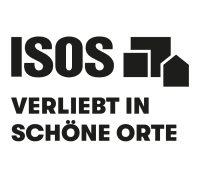Romainmôtier
Intro
Romainmôtier is a charming village in a secluded location on the Nozon river and is home to what is probably the oldest monastery in Switzerland. It can be found between two forested hills and gently nestled into the surroundings.
Legend has it that the monastery was founded around the year 450 by Saint Romanus of Condat, making it the oldest monastery to be founded in Switzerland. The Romanesque church, which dates back to the 11th century, was modified in subsequent centuries. The monastery experienced its heyday up until the middle of the 15th century. However, after the onset of the Reformation, the monastery was secularised, the prior’s house became the seat of the bailiff, and the cloister was gradually demolished. Following on from Romainmôtier having held city status for two centuries, the end the old order finally led to its decline. The abbey church is still the focal point of the lower town. Various squares and other spaces create some breathing room in its exceedingly dense construction.
The upper town – which is characterised by a long line of country houses, most of which date back to the 18th and 19th centuries – also captivates visitors. The architectural prelude to this line-up is a particularly striking country house in the east: House Glayre from the late 16th century.
Romainmôtier is located in a bend in the Nozon river. Nestled between two steep forested hillsides, it appeals with its secluded location. Despite the passing of time and the – at times serious – invasions that Romainmôtier has suffered in its past, this place has retained its spiritual character.
ISOS
ISOS is the Federal Inventory of Swiss Heritage Sites of national importance. The inventory is maintained by the Federal Office of Culture (FOC) and lists the most significant settlements in Switzerland. Today, some 1,200 places are included in the inventory, from hamlets right through to cities. The inventory provides information on the development and identity of the settlements listed in it, thereby contributing to the preservation of architectural diversity in Switzerland and promoting both sustainable planning and a high-quality Baukultur.







